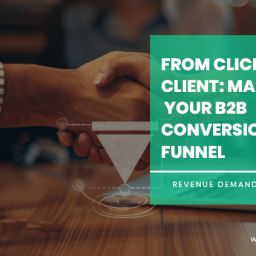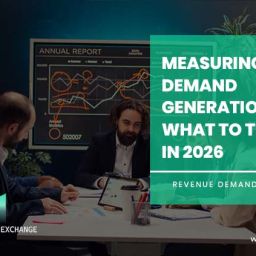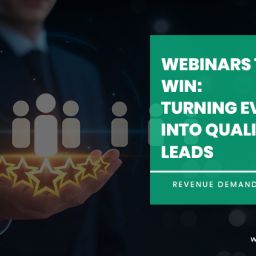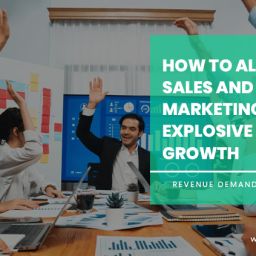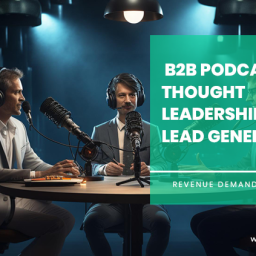Discovering Hidden Leads: How to Use Trigger Events Effectively
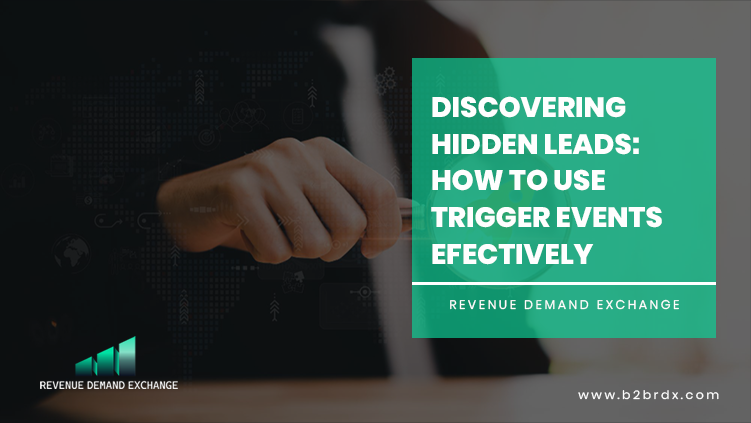
In today’s fast-moving digital landscape, traditional lead generation tactics—like cold outreach or static prospect lists—often fail to deliver the desired results. The reason? Markets evolve quickly, and buyers make decisions based on real-time needs, not static data. To truly connect with potential customers, businesses must identify and act upon trigger events—specific changes or signals that indicate a lead’s readiness to buy.
Trigger events can turn invisible prospects into hot leads by revealing intent and providing context for outreach. Whether it’s a company expansion, a funding round, a leadership change, or a new product launch, these events offer clues that a business may be open to new solutions. Understanding how to use trigger events effectively can give your sales and marketing strategy a serious competitive edge.
Understanding Trigger Events
Trigger events are moments that signal potential change, need, or opportunity within an organization or individual prospect. These can include internal business events (like hiring sprees or product launches) and external events (such as new legislation or market shifts).
When leveraged effectively, trigger events enable marketers and sales teams to engage leads at the perfect time—right when they’re more likely to be receptive to a conversation. Rather than casting a wide net, this approach focuses on intent-driven outreach, resulting in higher conversion rates and shorter sales cycles.
Common examples of trigger events include:
- Company growth or expansion into new markets
- Mergers, acquisitions, or partnerships
- Leadership changes (like a new CEO or marketing director)
- New funding or investment rounds
- Job postings that reveal new initiatives
- Product launches or service updates
- Negative press or PR challenges
- Regulatory or industry changes
Why Trigger Events Matter in Lead Generation
In the traditional lead generation model, businesses often rely on demographics, firmographics, or past behavior to identify prospects. While useful, these indicators don’t always reveal a lead’s current buying intent. Trigger events, however, are real-time indicators that something has changed—often prompting a need for new tools, services, or vendors.
By aligning outreach with these moments, you can approach leads when they’re most open to a solution. For example, a company that just hired a new Chief Marketing Officer may be evaluating new marketing technologies. Similarly, a startup that recently raised funding might be looking for service providers to support its next growth phase.
Building a Trigger Event Strategy
To use trigger events effectively, you need a structured approach that integrates data, tools, and timing. Below are eight strategies that can help you discover and leverage hidden leads using trigger events.
Identify the Right Trigger Signals
Not every event is relevant to your business. The first step is to define which types of triggers align with your product or service. For instance, if you sell HR software, hiring spikes or job postings would be strong signals. If you’re in cybersecurity, news about data breaches or compliance changes might be more meaningful.
List 5–7 key trigger types that usually precede a buying decision in your target market. Once identified, you can monitor these signals consistently using automated tools or data platforms.
Leverage Sales Intelligence Tools
Modern sales intelligence tools such as ZoomInfo, Apollo.io, Clay, or LinkedIn Sales Navigator make it easier to detect and act on trigger events. These platforms use data enrichment and AI to surface real-time changes in company activity, such as funding announcements, leadership hires, or product launches.
Integrating these tools with your CRM allows your sales team to get automatic alerts when relevant triggers occur. This ensures that you never miss the perfect window to engage.
Monitor News and Social Media
Social listening is a powerful, yet often overlooked, source of trigger events. Platforms like X (formerly Twitter), LinkedIn, and even niche industry forums can provide early indicators of company activity. Monitoring hashtags, keywords, or mentions related to your target accounts can help uncover opportunities before your competitors do.
Set up Google Alerts or use social monitoring tools like Mention, Brand24, or Talkwalker to track trigger-related keywords—such as “expansion,” “funding,” or “partnership.”
Use Website Behavior as a Trigger
Trigger events aren’t limited to public data. Your own digital ecosystem can reveal valuable intent signals. For instance, when a lead visits your pricing page, downloads a case study, or spends time on a specific service page, these actions indicate interest.
Using marketing automation platforms like HubSpot, ActiveCampaign, or Marketo, you can set up behavioral triggers that alert your team when a lead exhibits buying intent. This enables timely follow-ups with contextually relevant communication.
Align Content with Trigger-Based Messaging
Once you’ve identified a trigger, your outreach or content should reflect the specific event. For example, if a company recently raised Series B funding, your email could acknowledge their milestone and subtly highlight how your product helps companies scale efficiently.
Personalized, trigger-based messaging feels timely and relevant, making it far more effective than generic outreach. Combine real-time context with empathy—acknowledging what the company is going through and offering value tailored to that situation.
Combine Trigger Events with Account-Based Marketing (ABM)
Trigger events become even more powerful when integrated into an Account-Based Marketing (ABM) strategy. In ABM, you focus on high-value target accounts and deliver personalized campaigns. By layering trigger data on top of your ABM strategy, you can engage accounts at the right moment with highly relevant messaging.
For example, if a target enterprise just announced a merger, your marketing and sales teams can collaborate on a campaign showcasing how your solution simplifies post-merger integration.
Create a Trigger Event Database
Consistency is key. Keep a centralized record of trigger events associated with your prospects and customers. Over time, this data helps you identify patterns—such as which triggers most often lead to successful conversions.
A trigger event database can also help refine your ideal customer profile (ICP). You might discover, for instance, that companies undergoing digital transformation are your best-fit leads.
Act Quickly and Follow Up Strategically
Timing is everything with trigger events. Acting too late can mean losing the deal to a faster competitor. As soon as a relevant trigger occurs, reach out within days—not weeks. However, avoid being overly aggressive. Start with a value-driven approach that connects the trigger event to your solution naturally.
For example, after spotting a hiring spree, you might say:
“I noticed your team is expanding rapidly—congratulations! Many growing teams we work with find it challenging to streamline internal communication. Would you be open to exploring how we’ve helped similar companies manage this efficiently?”
This conversational tone builds rapport and shows genuine awareness of their situation.
Conclusion
In the age of data-driven marketing, success isn’t just about collecting leads—it’s about discovering the right leads at the right time. Trigger events bridge that gap by revealing moments when prospects are most receptive to change.
By systematically identifying, tracking, and acting on these signals, you can uncover hidden opportunities that traditional lead generation misses. Whether through sales intelligence tools, social listening, or behavioral analytics, trigger event marketing empowers you to approach prospects with context, precision, and perfect timing.
When used effectively, trigger events don’t just generate leads—they build relationships rooted in relevance and value. In a competitive market where timing is everything, mastering this strategy can be the difference between missed opportunities and consistent, predictable growth.


